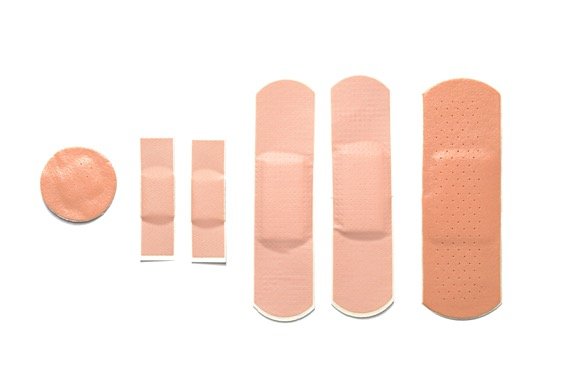A New Medical Development that Changes the Way We Heal
A team effort by researchers from the University of Nebraska-Lincoln, Harvard Medical School, and MIT culminated in a revolutionary new breakthrough that could result in faster healing of chronic wounds.
The researchers developed a bandage which consists of electrically conductive fibers. Each bandage’s fibers are coated in a gel that is loaded with infection-fighting antibiotics, tissue-regenerating growth factors, painkillers, and any other medications that are needed for the patient’s specific injuries.
A microcontroller sends small amounts of voltage through a chosen fiber, heating the fiber and its hydrogel and releasing the medications contained within. Further research has shown that the heat required to make this work has no effect on the medication’s potency. Each bandage has the potential to contain a variety of medications, and wireless device capabilities allow for remote monitoring and control so the doses are administered on schedule. Through customization and remote monitoring tailored to the patient’s needs, the healing process is sped up without requiring consistent removal and reapplication.

Ali Tamayol, Assistant Professor of Mechanical and Materials Engineering at the University of Nebraska-Lincoln, stated, “This is the first bandage that is capable of dose-dependent drug release. You can release multiple drugs with different release profiles. That’s a big advantage in comparison with other systems. What we did here was come up with a strategy for building a bandage from the bottom up. This is a platform that can be applied to many different areas of biomedical engineering and medicine.”
A variety of uses for the smart bandages include chronic skin wounds that stem from diabetes, combat wounds, and other severe injuries that require a significant amount of care. Typically, injuries of this magnitude would require treatment with astronomical costs that many people simply cannot afford, so researchers are interested in finding solutions that benefit the patient without draining them and their bank accounts.
Currently, bandages range from dry patches to advanced designs capable of medication release over a period of time. Tamayol and his colleagues at Harvard ran a series of tests designed to evaluate the potential advantages of their smart bandage. One such experiment involved applying a smart bandage loaded with growth factor to wounded mice, resulting in tissue regrowth three times that of a dry bandage.
The researchers have since patented their design, though it requires further testing before it is ready to hit the market. However, many of the bandage’s components are already approved by the Food and Drug Administration, which should speed up the process to some extent. As research continues, the team will work to incorporate sensors that measure glucose, pH, etc. in an effort to create a bandage that could autonomously administer proper treatments.
Source:
https://phys.org/news/2017-10-smart-bandage-faster.html


































